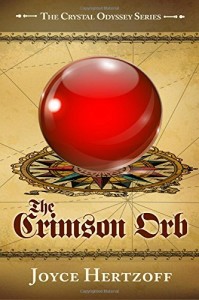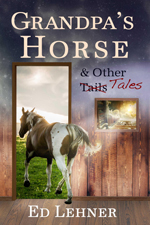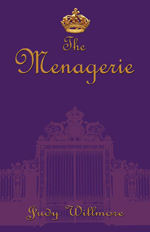Author Joyce Hertzoff writes mystery and speculative fiction with strong female characters eager to earn a place in their world. In 2020, she completed her four-book Crystal Odyssey fantasy series, and in 2022, she released Winds of Change, book two in her series of science fiction Portal Adventures. You’ll find Joyce on Facebook, Twitter, and Pinterest, as well as on FantasyByJoyceHertzoff.com and HertzoffJo.blogspot.com. Read more about Joyce in her 2015, 2017, 2019, and 2021 SWW interviews, and visit Amazon for all of her books.
 What is your elevator pitch for Winds of Change?
What is your elevator pitch for Winds of Change?
The portals from Nokar to other worlds are changing and the inhabitants of those worlds are disappearing. Will Anabet Haines and the other portal travelers discover why and find a way to restore them?
What unique challenges did this work pose for you?
I had some creative problems concerning finding a solution to the plot situation at the end, but the biggest challenge was formatting the manuscript to meet Amazon/Kindle’s exacting requirements.
What prompted you to write this second installment in your portal series? How did the book come together?
I enjoyed writing A Bite of the Apple, the first book in the series, and I knew I had more to do with the characters. I needed a situation where most of them would participate in the action and in the conclusion. I think I started writing this soon after Apple was published but set it aside a few times before I finished the first draft. I finally finished it and submitted it to a couple of critique groups. At sixty-one chapters, it took a long time for them to get through it. Then the editing began.
I used Fiverr for the cover after I found I had no idea what I was doing creating a cover in Canva. The Fiverr artist I picked was able to take my first stab at it and transform it into the final cover. She sent me covers for both the eBook and the print version and knew how to modify them to meet the KDP requirements.
Who are the main characters, and what do you like most about each of them?
The main character is Anabet Haines, called Bet. She’s a spunky nineteen-year-old farm woman who’d been recruited to be a portal traveler about six months before this story begins. She showed how smart and inventive she could be in the first book of the series where she had several situations to deal with. But she’s also a bit naïve and unsure she can do everything she’s asked. Quint is a young man from another world, Lamady, where his mother is one of the councils of ruling Mothers. He’s the youngest of several brothers and determined to prove he’s the worthiest. He’s also an advocate for the portals and the use of portal keys and magic. He’s currently an apprentice to the mage Cass.
Aunt Gill is Bet’s aunt and an experienced portal traveler. She and the mage Morgan have become a couple. Monique Cho is a young woman from Earth who was Bet’s roommate in New York City in the first book. She writes historical novels and used Bet as the model for the heroine of her book. Bet meets her again in the oddest of places.
What was the most difficult aspect of world building for this book?
Because the characters visit several worlds in Winds of Change, I had to build several very different ones. I had to think of diverse parts of these worlds and how they differ from each other.
 The Portal Adventures series and The Crystal Odyssey series use science to make their storylines work. What elements of science do you include in Winds of Change?
The Portal Adventures series and The Crystal Odyssey series use science to make their storylines work. What elements of science do you include in Winds of Change?
The main scientific principle I used was that electronic vibrations can have many frequencies. In this case, though, their use is very different from how we use vibrational frequencies. I needed some kind of science to explain how portals work. I still haven’t decided how portal keys can allow travelers to pass through portals or even how the portals can take people from one place to another. We’re just scratching the surface.
What was your favorite part of putting this project together?
I enjoy writing about Bet and her growing awareness. There are more adventures in store for her. Who knows where she’ll go next?
Did you learn any lessons from writing/publishing this book that you can apply to future projects?
I’ve definitely learned more about how to format in Word and the differences in what works for a print book vs. an eBook. It’s more complicated than it used to be. I’ve also learned to let my imagination flow, not to force the story in a certain direction it will not go.
What’s your reading routine like? What’s on your to-read pile?
I read both eBooks (on my phone, often while I’m eating) and print books (in the bathroom — can I say that?). At the moment I’m reading two very different stories: Grand Ellipse, a hardback fantasy novel about made-up monarchies and republics and a race around the made-up world for glory and property; and The Brighter the Light about people in an Outer Banks beach resort following a character in the 1950s and her granddaughter in 2021. Waiting on my pile are an assortment of mysteries, science fiction and fantasy, books on writing and thrillers. On my phone I have books in the same genres. Then there’s my list of “Want to Read Books” on Goodreads.
What writing projects are you working on now?
Currently, I’m working on a time travel story set in southern Arizona, a mystery story set in a smallish city in 1890s England (which requires the most research), and a series of shorter pieces about the teenage members of a family who deliver goods and messages from planet to planet in a distant star system that was settled after the Earth was destroyed.
 KL Wagoner (writing as Cate Macabe) is the author of This New Mountain: a memoir of AJ Jackson, private investigator, repossessor, and grandmother. Kat has a speculative fiction blog at klwagoner.com and writes about memoir at ThisNewMountain.com.
KL Wagoner (writing as Cate Macabe) is the author of This New Mountain: a memoir of AJ Jackson, private investigator, repossessor, and grandmother. Kat has a speculative fiction blog at klwagoner.com and writes about memoir at ThisNewMountain.com.







































